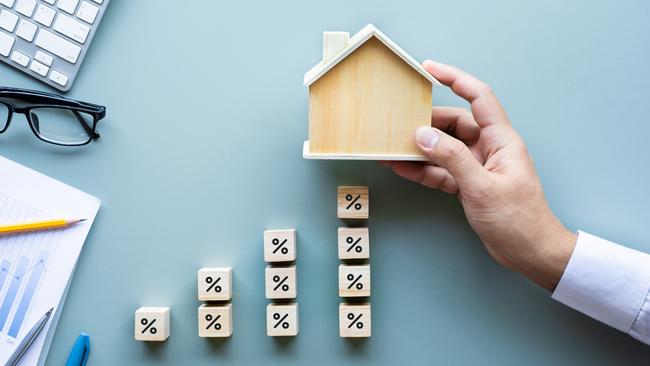
Everyone, everywhere is getting a gift from Canberra: a tax cut, rent assistance, energy bill rebate, reduced higher education debts, support for small business, and a lower deeming rate for retirees.
In case you missed his speech on Tuesday night, the Treasurer’s printed budget speech uses the word “every”, or a variant of it, 25 times. Inclusion is the new fiscal religion. Intervention is back, in a future invested with the failed ideas of the past.
Of course, not every spending measure in a $700bn budget is an undeserved benefit during a cost-of-living crunch or avoidable in a rapidly ageing, high-expectation wealthy society.
But at a time of elevated inflation, and after being put on notice by the Reserve Bank a week ago about an excess of demand, Chalmers and Finance Minister Katy Gallagher are pumping up spending by a real 4.5 per cent this financial year and 3.6 per cent next year.
Why would they be doing this? It’s crazy brave. Give me expansion, or give me political death!
Last year, Labor used a five-year metric to claim its fiscal best-in-show award. So, using the same principle, spending this year and over the four-year forward estimates period grows by a cumulative and real 13.1 per cent, or 2.6 per cent a year.
Take out this financial year, and the average is a middle-of-the-road 2.1 per cent over the “forwards”.
Wouldn’t it be grand to have a hard fiscal rule that caps spending growth at this level and aims for a balanced budget over the ups and downs of the business cycle?
We can only hope. Because the loose language of last year has been laminated into this year’s game plan as well.
Plainly, Chalmers and Gallagher are politicians, so can’t be held to the standards the rest of us are usually held to. After all, we don’t face elections every three or so years.
Ministers spend and fudge the numbers to make themselves look good. When you look good, you feel good as well, and that gets you through the grind of governing (although it’s way better than not).
On its figuring, Labor’s spending growth over its first two years in office and the coming four is a tidy 1.4 per cent a year. In his speech, Chalmers skited this is “less than half the average of the last 30 years and around a third of the growth under our predecessors”.
Sound pretty good, right?
But a lot has happened over the past three decades. We’ve been hit by “shock after shock after shock” as RBA chief Michele Bullock said in a different context.
In the early 1990s, Australia was coming out of the deep recession Paul Keating said “we had to have” and Labor splurged on public works and training to bring down a double-digit unemployment rate.
Then, for almost a dozen years, the nation was hit by a spending shock called John Winston Howard. He liked the word “every” as much as the current custodian, especially before elections.
In the financial year ahead of the 2001 poll, the Coalition increased spending by 9.1 per cent; over its entire term, federal payments rose by an average of 3.3 per cent a year, with Peter Costello running surplus budgets as a rule.
The global financial crisis in 2008-09 was met by Labor with an immediate and over-the-top fiscal response of cash handouts, cheap loans and public works, including very expensive school halls and sun shades. Custodian Wayne Swan increased spending by a whopping 12.7 per cent in a single year.
The 2020 Covid-19 health and economic emergency rewrote the fiscal records. Chalmers inherited a budget that, while far from perfect, was on a downward spending trajectory because the stimulus was designed to be temporary (the jury is still out on whether Josh Frydenberg’s “no-limits” approach was targeted and proportionate).
Right now, Chalmers confronts none of these defining crises, although Anthony Albanese does have the love-me tendencies of Howard. In fact, all national leaders want to be adored and win more than once; it’s the means and tricks that vary with the times.
What the Treasurer does face, however, are the forever costs, which arise from the acute pressures in health, national defence, aged care and the National Disability Insurance Scheme. Over the coming decade, defence, aged care, medical benefits and hospital costs are expected to each rise by 6 per cent a year. The NDIS is the big mover, rising by 9.5 per cent a year.
If Labor can redesign the scheme and bear down on the cost growth of individual plans, then it has a chance of making a life-changing program sustainable and saving the federal budget.
Government has got bigger by around $30bn a year since the pandemic. The fiscal backsliding over the next few years presents many risks, as payments rise above receipts and a decade of deficits awaits whoever wins the next few elections.
If taxing doesn’t rise to meet this extra spending, via our old friend bracket creep, then we’ve got a permanent hole in our finances.
But in these difficult days of the Big Inflation, this pre-poll shot of spending is audacious. It’s risky and if there is any further slippage in discipline, or more overruns in funding the ailing states and territories, then Chalmers will be seen as reckless. Maybe even a wrecker.
Every cheap slur this century from Labor’s political opponents – that it is, at heart, a tax-and-spend profligate show – will now morph into a snarling, ugly beast with flesh and bones and consequences.
In this indulgent budget, the Albanese government has reverted to its worst caricature, with the RBA now exposed to fighting a lone hand against inflation with higher interest rates for longer.







Jim Chalmers has ripped loose the purse strings and liberated the Albanese government from its post-pandemic excursion into prudence.